Telstra recently announced its newest smart modem, the Telstra Smart Modem 3, which the company has been stating is twice as fast than any smart modem in the marketplace, with the company stating and undertaking its own independent testing which showed its new Smart Modem 3 outperformed other so called modems the other competitors have in the market.
As someone who uses Telstra for its HFC NBN connection and have used both its original smart modem and smart modem 2 more recently, when the company announced the Smart Modem 3, I wanted to see if the new modem would improve my internet speeds and connections around my house.
So does the Telstra Smart Modem 3 live up to the hype and deal with the daily barrage of working from home, entertainment alongside our IoT devices, let have a look shall we.
What’s in the box
In terms of what’s in the box, you get the smart modem 3, power cord, a magnet which contains your network ID, Password and a QR Code printed on it which you can scan with your mobile device’s camera (where available) to be able to connect your device without putting in the long password.
One thing the packaging doesn’t include any Ethernet cables, so if you have any devices that are hardwired to your current modem, then you might want to keep these cords. That being said, I am reading that Telstra are now including a single ethernet cable for new and existing customers.
The modem design
The modem, which is slightly bigger and just ever so slightly taller than the Smart Modem 2 I have, is made from up to 80% recycled material plastic.
The back of the modem is where you till find your Ethernet cable ports, of which there are 4 to connect your laptop, security and more devices directly into the modem, there is the WAN port which you will use to connect your NBN router into the modem to be connected to the internet.
There is also a single USB 2.0 slot, a single DSL Ethernet port and 2 phone line Ethernet ports to connect your landline devices directly into it. There are also the SIM Slot for the 4G SIM and a reset button located above the 4G SIM Slot. To the right is the status lights of which there are 4 of them to advice you when your connected to the NBN or $G connectivity alongside advising if your landline phone is connected and Wi-Fi status light.
Below this is the WPS and Wi-Fi signal buttons as well to help connect devices or to turn on and off the Wi-Fi signal.
The front of the Telstra Smart Modem 3 has a single light at the bottom of it that also shows you when the device is ready or connected to the NBN or the 4G SIM backup. The light will change colours depending on if it is connected or not. For example:
- Red = No internet connection
- White = Ready to connect
- Blue = 4G SIM Connected
- Green = NBN Connection established and ready
Smart Modem 2 vs Smart Modem 3 comes with Wi-Fi 6 technology (OFDMA) in what is slowly becoming a new standard for Wi-Fi and it certainly does show, compared to the Smart Wi-Fi 2 which contains OFDM or Wi-Fi 5 standard. I will go into this a little further down in the review.
Furthermore, the new Telstra Smart Modem 3 comes with a 4G SIM card to enable you to have a backup option should your NBN connection go down. I will go into this further down in the review showing some of the issues I did have when my NBN connection dropped out thanks to the torrential rain we got here in Sydney.
What’s the difference between Smart Modem 2 and Smart Modem 3?
Smart Modem 2 vs Smart Modem 3 comes with Wi-Fi 6 technology, in what is slowly becoming a new standard for Wi-Fi, whereas the Smart Modem 2 utilises Wi-Fi 5 or 802.11ac technology. You can read about what Wi-Fi 6 technology brings via an post my fellow colleague Phil wrote here.
The main difference comes down to how the modem interacts with all the connected devices. For example, 802.11ac or Wi-Fi 5 brought with it Orthogonal Frequency Division Multiplexing (OFDM) that divided the communication channel into sub-channels to avoid some of the data collisions that occur.
However with Wi-Fi 5, it did mean that it only communicated with a single device at a time on a frequency band.
Whereas Wi-Fi 6 brought along OFDMA or Orthogonal Frequency Division Multiplexing Access, which brings with it significant improvement over OFDM can now communicate with multiple devices at the same time and at higher speeds.
This addition of OFDMA does allow for a more stable connection across multiple devices which are needing internet connectivity such as smartphones, tablets, computers/laptops and your IoT devices like smart lights, smart speakers etc. This is the main difference between the first 2 generations of Smart Modems over the Smart Modem 3.
Furthermore, the new Telstra Smart Modem 3 comes with a 4G SIM card to enable you to have a backup option should your NBN connection go down. I will go into this further down in the review showing some of the issues I did have when my NBN connection dropped out thanks to the torrential rain we got here in Sydney.
You can look below at the speed test for NBN HFC Connection between the original Smart Modem 2 and the Smart Modem 3:
You can see the 4G connection speed differences between the Smart Modem 2 and the Smart Modem 3 here:
Of course there is also the size of the modem, which is just a bit bigger and wider compared to the Smart Modem 2. Further more the differences come down the a few little things mainly at the back of the device. The Smart Modem 2’s backup SIM card is held behind a rubber plastic flap which is a bit of a faff to try and open without the need of using say a butter knife or a pair of tweezers.
Also the power cord plugs directly at the back into its own dedicated port with the Smart Modem 3 whereas the Smart Modem 2 has a specifically specialised T design which fits underneath the device and I have to say I prefer the Smart Modem 3’s power port compared the Smart Modem 2’s power port.
4G backup – great to have when it works
As stated earlier, the new Smart Modem 3 comes with a 4G SIM which backs up to the Telstra 4G network and I do have to say it was great, when it worked.
When my NBN connection went down on a weekend, normally the 4G SIM should instantly turn on, but it didn’t. Seeking assistance via the Telstra 24×7 app via chat proved to be utterly painful.
One thing that I think everyone can agree on is that Telstra support is definitely not the greatest help or customer service around. Speaking to quite a few reps both on Sunday and Monday was just utterly painful and the excuses ranging from, ‘you don’t have a 4G SIM enabled modem’, to ‘you don’t have a stable 4G connection’, which is utterly incorrect, drove me to insanity.
It took a few calls and also reaching out to Telstra’s PR rep for assistance in fixing the issues I was experiencing with the 4G backup SIM. Even after a NBN technician came out, our main HFC connection was quite poor and to make matters worse, the 4G SIM connection decided to stop working after a day and half.
To this day with the review, there is still issues and quite frankly whilst the Telstra NBN Faults team on the phone and they’re PR reps were far more helpful, I would like to point out the achilles hell and downfall for customer support and unhelpful advice and support laying squarely with the staff who are on the app, which the company is promoting as the better option over calling.
Despite this issue with the technical support team, when the 4G SIM was being utilised, it did enable at least some connection to the internet, albeit at a lower speed but still good enough to watch Netflix and other streaming app on a couple of devices. Again I do have to say a big thank you to the Phone technical team and Telstra PR for working to fix these issues
Should I consider upgrading?
Despite the NBN and technical issues I did experience with the modem, mainly being the *lack* of support via the Telstra app, the speeds I was able to achieve with the Telstra Smart Modem 3, far outweighs the issues I experienced with the Smart Modem 2, which offered slower Wi-Fi connections and just couldn’t handle all our IoT devices we have connected around the house.
I would without a doubt say that if you still even have the first gen Smart Wi-Fi or coming to the end of your current contract with a Smart Wi-Fi Gen 2 and you are in need of a faster, more stable connection, then the Smart Modem 3 is the way to go.
You can check out more relating to the Smart Modem 3 via the Telstra website here and also view its NBN plans here.

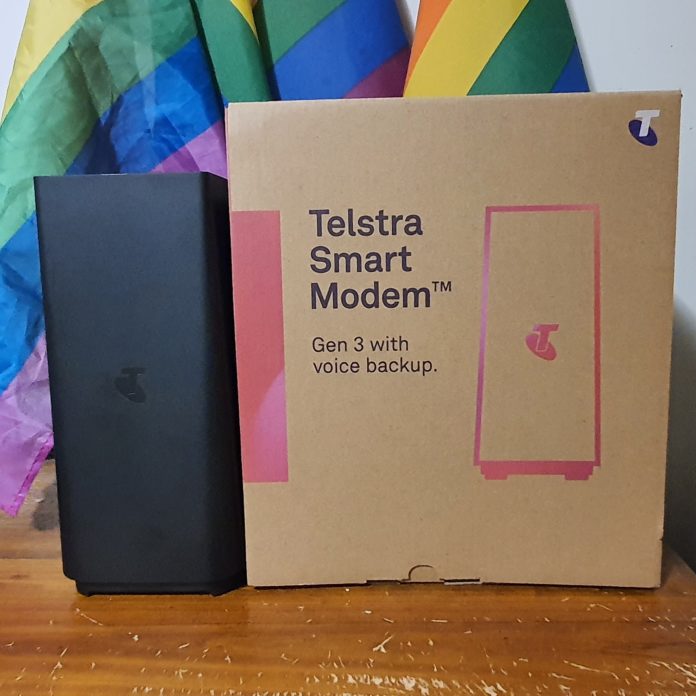
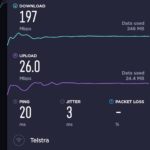

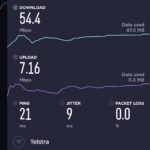
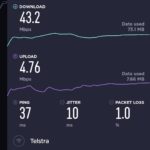
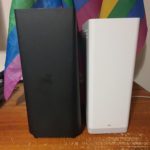


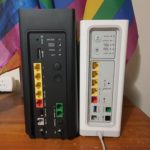
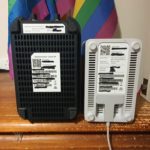



Sad to hear about the somewhat poor support, the other problem I see is these self help forums where customers talk to customers with not a Telstra person in sight, it’s basically the blind leading the blind – totally useless. They made it they should sort out the issues.
Nice to see Telstra finally offering Wi-Fi 6 Gen 3 modems. But the review does not cover the number of streams and signal strengths at different distances from the router. Nor whether it has mesh expansion capabilities. I suspect it is 2 x 2 dual band AX26000 but there are no specs anywhere. What company makes it?
Technicolor CobraXh
australia approved wifi 6e last week
australia will use the lower band 6ghz it will be (5.9ghz to 6.4ghz)
(5925-61215MHz)
5.9ghz to 6.1 ghz
telstra rushed with it
wifi 6e approved in australia
the website here
Countries Enabling Wi-Fi 6E | Wi-Fi Alliance
Australia Adopted : 5925-6425 MHz
Considering : 6425-7125 MHz
dont buy wifi 6
keep waiting for the new wifi 6e routers till end of the year